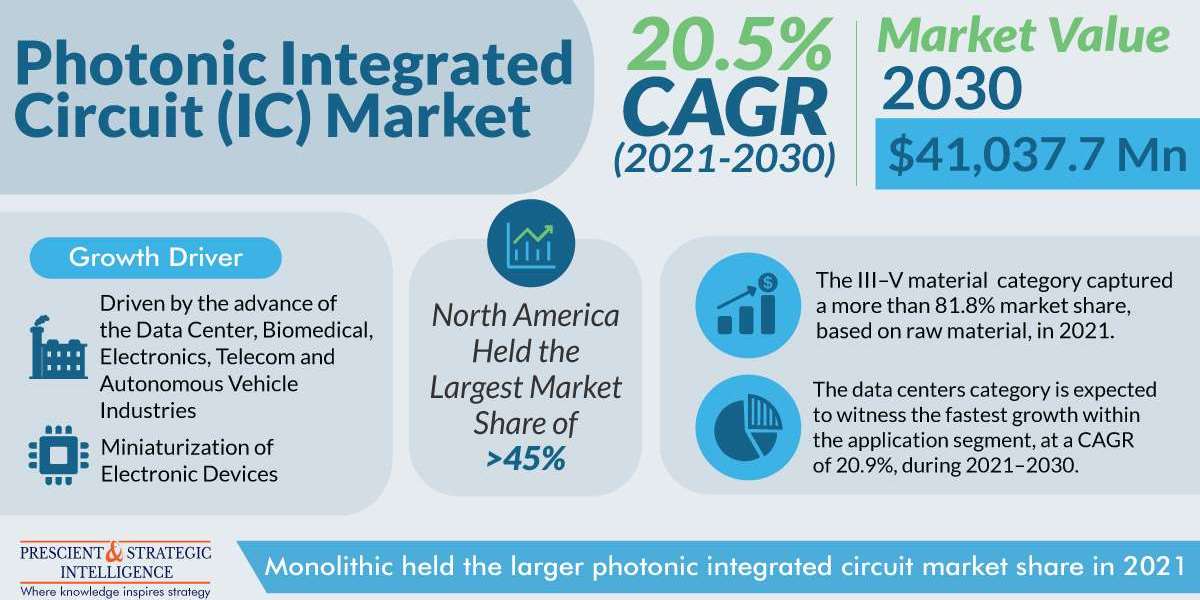The worldwide revenue of the photonic integrated circuit market is projected to reach USD 41,037.7 million by 2030, growing at a CAGR of 20.5% by the end of this decade.
The industry is driven by the increasing adoption of autonomous vehicles, rapid automation in different sectors, trend of miniaturizing electronic devices and growing demand for these components in telecommunications, biomedical and data center facilities.
On the basis of raw materials, III-V materials had dominated the industry with a share of over 81.8% in the past. This was due to their use in 3D depth sensing technology in various applications, including automotive lighting, LiDAR, IR LED, electronics, as well as horticultural lighting.
Moreover, silica-on-silicon materials ranked second in raw materials. These are favored because of their low cost and ease of integration into electronic devices.
In addition, the growing demand for data centers and high-performance computers with increasing traffic on telecommunications networks pushed the requirement for high-speed, wide-bandwidth, low-cost and energy-efficient data transfer.
The data centers are the fastest growing in the application category and this growth is attributed to the increasing demand for cloud interconnection services, the expansion of 5G mobile networks and rise of video streaming, which ultimately leads to the construction of large-scale data centers worldwide.
Monolithic process holds the larger market share in the integration process segment in the past due to its ability to integrate active and passive optical devices seamlessly using a single material.
In addition, the commercialization of monolithic photonics platforms and advancements in CMOS technology are also driving the growth of the industry.
North America dominated the photonic IC market in 2021 with a share of around 45%. The region's ascendence is attributed to the widespread use of WAN applications, fiber-optic communications, and data centers.
The growing demand for high-speed data transmission, fueled by cloud computing networks and IoT, further boosts the growth of the industry.
As companies look for greater bandwidth and efficiency, they are adopting integrated circuits that use light and photons instead of electricity and electrons. These photonic integrated circuits have the potential to enable various future applications, including support for technologies like quantum computing.
Furthermore, Europe followed North America in terms of revenue share, because the increasing number of data centers in countries like Germany, the U.K. and Netherlands.
The region is also benefiting from the rising demand for cardiac diagnostic sensors, high-speed fiber-optic communications and self-driving cars.
The demand for photonic ICs will continue to grow in the years to come, because of the increasing use of these devices in biomed, electronics and telecom industries, and data center facilities all over the world.
Source: P&S Intelligence







